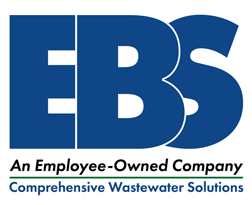A common problem in aerated stabilization basins (ASBs) is oxygen deficiency. This can arise for a variety of reasons, such as a power outage, aerators being offline for maintenance, oxygen scavenging by sulfur-containing chemical compounds, or upstream production spills that increase organic loading to the wastewater treatment plant (WWTP). Under oxygen-deficient conditions, the oxygen supply may not meet the biological oxygen demand (BOD), putting permit limits at risk of violation. When this occurs, it is up to the environmental staff to respond quickly with a solution to ensure that permit limits are maintained. One effective solution is the application of a liquid nitrate salt such as calcium nitrate or EBS (CalNit).
During biological wastewater treatment, organic compounds are removed by bacteria through two linked processes: catabolism and anabolism. This overall process—collectively referred to as metabolism—depends on the availability of a terminal electron acceptor. If dissolved oxygen (O₂) is present, bacteria will use it as the terminal electron acceptor because it provides the highest energy yield. However, under oxygen-deficient conditions, bacteria must rely on an alternative. The next most energetically favorable terminal electron acceptor after oxygen is nitrate (NO₃⁻). The application of CalNit provides a cost-effective way to address oxygen deficiency and ensure that BOD removal continues at an effective rate.
Compared to oxygen, nitrate is also highly effective for BOD removal. Each gallon of CalNit provides roughly 3 pounds of BOD removal potential, making it a powerful tool during oxygen-deficient conditions. A full truckload can deliver the equivalent of over 11,000 pounds of oxygen.
The use of EBS CalNit offers a scientifically sound method to help facilities meet BOD permit limits during oxygen-deficient events, while also providing additional benefits. It can be stored safely onsite in plastic or fiberglass tanks, and its by-products are harmless. CalNit is highly soluble in water, and because nitrate is non-volatile, it remains in the wastewater until it is used by bacteria. Additionally, when properly applied, CalNit prevents the formation of hydrogen sulfide (H₂S). This is because nitrate is a more favorable terminal electron acceptor than sulfate (SO₄²⁻). When sulfate is used as the electron acceptor, it results in H₂S production—a corrosive and odorous gas. If nitrate is available, bacteria will preferentially use it over sulfate due to the higher energy yield, effectively inhibiting H₂S formation.

